A Definitive Ranking of Every Green Day Album
- Oops!Something went wrong.Please try again later.
- Oops!Something went wrong.Please try again later.
The post A Definitive Ranking of Every Green Day Album appeared first on Consequence.
This feature originally ran in 2016, but we’re dusting it off for Billie Joe Armstrong’s birthday on February 17th.
More than 30 years ago, two 14-year-old smartasses named Billie Joe Armstrong and Mike Dirnt decided to play music together in and around Berkeley, California. Alongside drummer John “Al Sobrante” Kiffmeyer, the three formed Sweet Children, causing all sorts of ruckus within the surrounding DIY punk scene — enough to catch the eyes and ears of Larry Livermore, who immediately signed them to Lookout! Records.
It was here that the story of Green Day truly started, and through multiple EPs, two full-length efforts, and one Tré Cool, the Bay Area brethren would land a major record deal and change the rock ‘n’ roll landscape.
When you think about how far Green Day have come, it’s almost like watching a movie. Or rather, a series of films with one blockbuster sequel after the next, only some of the follow-ups are better than the others for reasons that shouldn’t make any sense at all. They’re one of the few rock acts to not only survive the ’90s but conquer the aughts, finding second and third lives like they’re Selina Kyle or Dorian Gray.
The 50 Best Punk Songs of All Time
In some respects, it seems like every time they return with a new album they’re connecting with an even younger fan base than last time, but of course, that’s simply us older fans getting older.
With each addition to their catalog, we ask: Will this be their last? Or will they enjoy another commercial and critical smash? One that will carry them through the following year and beyond until we’re asking these same questions again with their next entry?
While we can’t predict the future, we can look into the past and dissect the 13 albums that brought them to this point. Well, that’s exactly what we did, so enjoy the read, and please save the mud for the end.
— Michael Roffman
13-11. ¡Uno!, ¡Dos!, ¡Tré! Trilogy (2012)
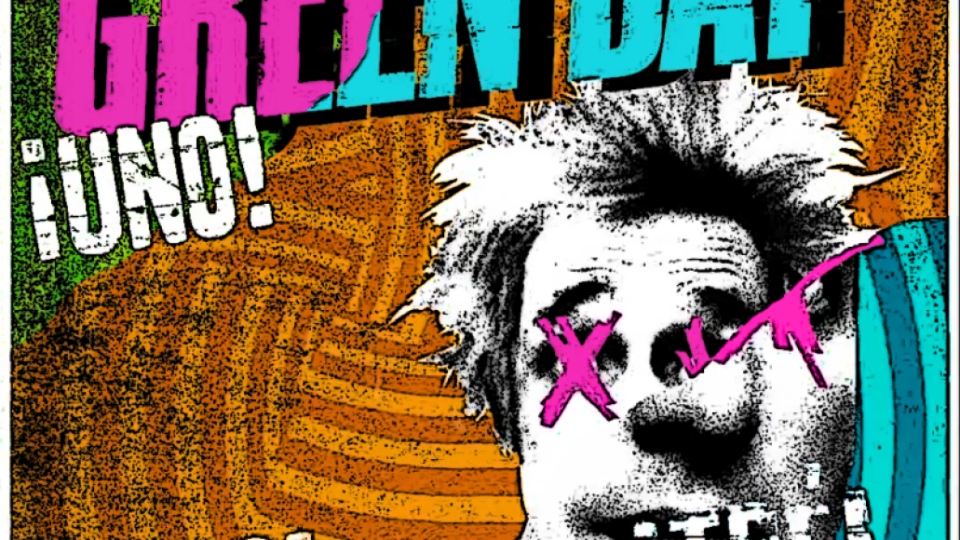
Runtime: 41:44, 39:21, and 46:35
Brain Stew (Recording): After composing and relentlessly touring two separate rock operas — American Idiot and 21st Century Breakdown — it seems as if Green Day were itching to abandon structure in favor of reckless ambition. “We are at the most prolific and creative time in our lives,” Billy Joe Armstrong proclaimed in early 2012. “This is the best music we’ve ever written, and the songs just keep coming.” It probably felt good, being able to write without the restriction of a theme or story. The result was three individual LPs, each focusing on a different style.
The first, ¡Uno!, centers around the kind of pop-punk that made them famous. The second, ¡Dos!, is a nod to Foxboro Hot Tubs, the band’s dirty, garage-centric side project. And Armstrong described the third, ¡Tré!, as “epic” and a “mixed bag,” stating that it would mainly consist of stadium anthems with classic rock influences.
In many ways, the trilogy resonates as an attempt to encompass the breadth of Green Day’s evolution. In doing so, however, the band overreached: the albums are overlong and packed with filler. Furthermore, Armstrong checked into rehab for alcohol addiction in the midst of the trilogy’s staggered release schedule. Viral footage, taken during an onstage meltdown at the iHeartRadio Music Festival, showed a man who seemed exhausted and unhinged. The trilogy’s excess seems to have extended into the lives of the band.

Paper Lanterns (Album Artwork): There was an elegance to the artwork of American Idiot and 21st Century Breakdown, a simplicity that broadcasted themes of rebellion and community, respectively. ¡Uno!, ¡Dos!, and ¡Tré! aren’t nearly so sophisticated, with black-and-white headshots of the band members, each with X’d out eyes, shoddily slapped on a vortex of neon. It’s sloppy and playful, a way to let listeners know that there was nothing so lofty as a rock opera on this trio of discs.
Kill the DJ (Reception): Mixed reviews greeted each of the albums, though they mostly skewed positive, if only because the stakes were fairly low. Rolling Stone praised each album, while publications like The A.V. Club and Alternative Press grew more and more weary with each passing record.
Having a Blast (Best Live Cut): Easy. ¡Uno!’s “Let Yourself Go” is pure brat-pop candy, combining a breakneck pace with playfully rebellious lyrics that teens could memorize after a single listen. The opening riffs never fail to ignite rapturous applause, and live performances often find Armstrong riffing on the song’s melodies, inviting the audience to shout along as they bounce off the ceiling.
Longview (Most Memorable Video): The music video for ¡Dos!’s “Stray Heart” makes the song’s premise hilariously literal. In it, an alt-hunk buys Green Day vinyls for the alt-babes in his life, all of whom stare at him with doe eyes until they realize there’s a giant hole in his chest. Turns out his heart has absconded and is out banging ladies and smoking cigarettes. It’s funny, playful, and a perfect pairing with the jaunty, lighthearted track.
Song of the Century (Most Enduring Track): No track off this trilogy could be considered essential Green Day, though “Oh Love,” an early single off ¡Uno!, seems to be in steady rotation at their live shows, and its triumphant, sing-along chorus is a fine example of the pleasures of latter-day Green Day.
In the End (Final Analysis): There are good songs here — “X-Kid,” “Oh Love,” “Stray Heart” — but they’re buried in not just filler, but also experimental tracks that should never have left the demo stage. Despite being a single, “Kill the DJ” is embarrassing, a confused attempt at mainstream radio pop.
And while a collaboration with Mystic Knights of the Cobra’s Lady Cobra is intriguing, ¡Dos!’s “Nightlife” is as jarring as it is instantly forgettable. Ambition is a wonderful thing, but this trilogy feels more like a purge than a cohesive artistic statement, a chance for Armstrong, Dirnt, and Cool to do everything they weren’t able to while penning their rock operas.
— Randall Colburn
10. Revolution Radio (2016)
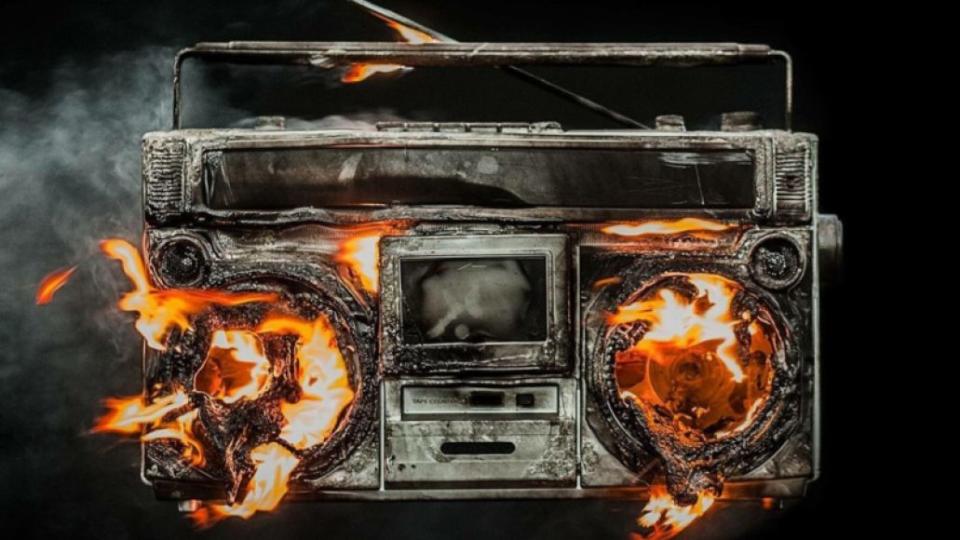
Runtime: 44:29
Brain Stew: Here’s a story that should sound familiar: Aging pop punk trio Green Day, on the brink of obsolescence, fleeing the spotlight for four years in order to regroup, rebrand, and return with an album destined to convert the next generation of teenage rebels. The time, it would seem, is ripe for Green Day to dig back into that same playbook and come up with another touchdown to extend the game. America is on the verge of putting another idiot into office, the 21st century has continued its ongoing breakdown, and millennials really seem like they could use some political direction, even if it’s couched in the black-and-white terms of “Know Your Enemy.”
And it’s not as if folks have totally lost interest in the alternative bands that dominated the early aughts; hell, if Blink-182 can stage a decent comeback with two-thirds participation, who’s to say Green Day can’t usher in another Golden Age with Tré Cool behind the kit and Mike Dirnt holding down the bass?
And so we have the origin story for Revolution Radio. Like Bruce Wayne heeding the Bat-Signal, punk rock’s grizzled superheroes have decided to suit up again and take on the world with power chords, punched-up drums, and snotty calls to action backed by two- and three-part harmonies. The fact that Armstrong can convincingly snarl lines like “I am a semi-automatic lonely boy” at the age of 44 only goes to show how well the formula works and how deeply it has seeped not only into the band’s veins, but into the very fabric of punk culture.
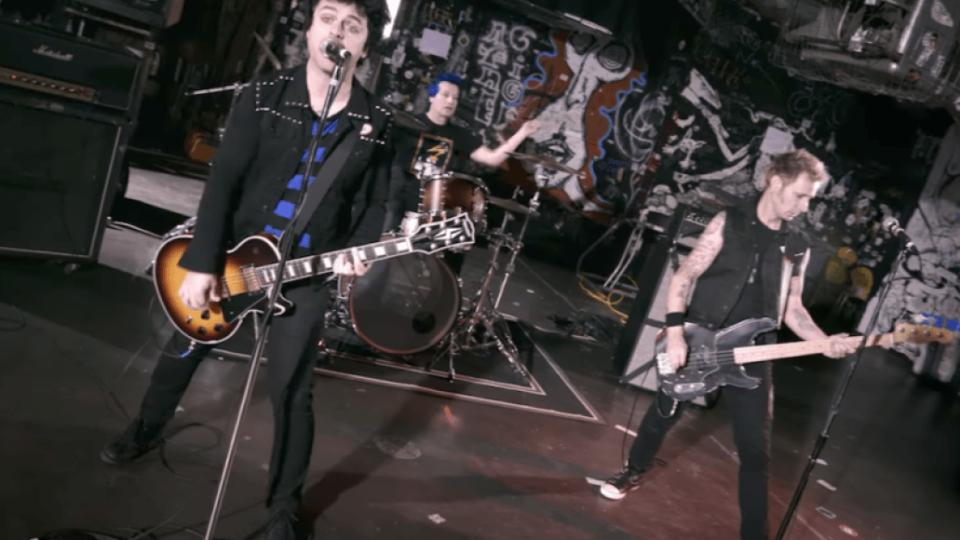
Paper Lanterns: Though Green Day might’ve been in the market for a revolution, it’s hard to imagine the album’s cover art being flown in defiance when said revolution arrives. Modern FM radio feels about as rebellious as Hot Topic, and the fiery boombox only makes it feel more dated and all the more certain that this revolution will not be televised … or, hell, even listened to by anyone but Green Day diehards five years from now.
Kill the DJ: “Green Day is back!” the headlines boldly proclaimed, their optimism fueled in part by an interview with Rolling Stone in which the band confirmed that they would be cutting down on the theatrics and getting back to a simpler, more refined brand of rage. “This was me, Billie, and Tré firing off each other in the same way as if we were practicing for Kerplunk,” noted Dirnt, invoking the ghost of early Green Day in a way that seems offhand but was clearly aimed at fans who fell off the bandwagon years ago.
The problem with Dirnt’s little tease of an assessment, however, is that Revolution Radio does not come across as the work of a band just riffing in the studio, free from the concerns of adulthood and the baggage of expectations. That version of Green Day has long since been replaced by a more manicured specimen that considers its actions and reactions with utmost care, which isn’t so much a criticism as an acknowledgement of what inevitably happens to bands that become world-famous for doing a thing and doing it well.
Having a Blast: At this point, Green Day know how to take a new album of material and seamlessly work it into their live show. And it’s not always the songs you’d expect that translate best. While Revolution Radio’s singles tend to come rapid-fire towards the beginning of sets, “Forever Now” does the far more serious lifting. Its sprawling, multi-part narrative lets it work as an epic final bow that fans can get behind, but what it’s really doing is whetting appetites for the band’s more theatrical and intimate closing encores.
Longview: In an age when nobody cares if a veteran rock band makes a music video at all, that disinterest should at least liberate a band to make the video they want. And while most of Revolution Radio’s accompanying videos consist of half-baked excuses to cut to the band playing together, it would be easy to believe all three were game for the premise behind the title track’s video, which bounces between present-day Green Day and early footage of the band playing the same space at 924 Gilman Street. A chance to see the band return to their humble DIY punk beginnings – the crossbeam overhead reading “Sweet Children,” the group’s original name – hits all the nostalgic sweet spots and reminds us that success never really equaled selling out.
Song of the Century: The simple-minded but effective “Bouncing Off the Wall” is a gloriously snotty sign of what could have been if Green Day had actually loosened their collars a bit more. “We’re all bloody freaks/ And we’ll give you the creeps,” is an Armstrong lyric that fans of any era can get behind, recalling the band’s Dookie-era grotesqueries without seeming like a rehash.
The End: When all the dust has settled after ordinary acoustic closer “Ordinary World,” we’re left with the impression of an album that never quite knows what it wants to be. The title hints at a rejection (however woefully outdated) of mainstream radio, and yet songs like “Still Breathing” sound engineered to sit alongside other motivational pop anthems in the daily rotation. Now, it’s perfectly fine to be confused when you’re a group of fortysomethings still playing a version of the music you grew up on and even helped shape.
Relevance is harder than ever to come by these days, and a band of veterans can be forgiven for taking a few too many steps out on the wrong ledge. What sinks Revolution Radio toward the bottom of Green Day’s discography is its insistence on backing away when the ground starts to crumble. This version of Green Day would rather spin in circles than sail off into the abyss, and that’s not a version we’re prepared to defend. — Matt Melis and Collin Brennan
09. Father of All Motherfuckers (2020)
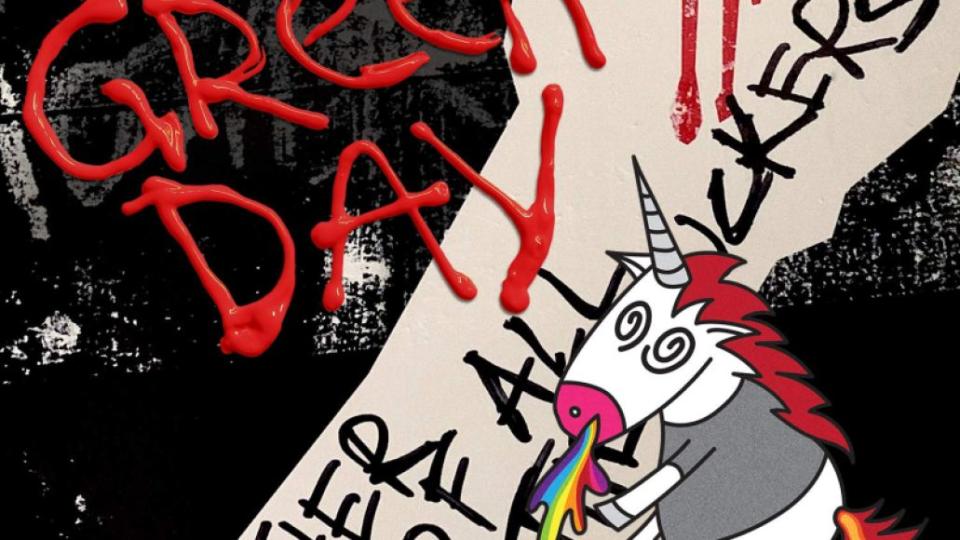
Runtime: 26:16
Brain Stew: Revolutions can be exhausting. And what’s more, they tend to be unpredictable. 2016 may have been a ripe time for Green Day to storm “the Bastille” once more and win over yet another generation of fans, just as they had done with American Idiot in 2004 and originally with Dookie back in 1994, but things didn’t turn out that way. Everything about Revolution Radio — from the boring album art right down to the overtly radio-friendly songwriting decisions — made for a record that seemed too safe and carefully calculated to actually be revolutionary or dangerous.
Fast-forward four years, and Father of All Motherfuckers feels more revolutionary than its predecessor if only because the trio aren’t trying so damn hard to be revolutionaries. Instead, they pack 26 minutes and 16 seconds with 10 songs of throwbacks, punk history lessons, and falsettos that render Billie Joe Armstrong’s voice almost unrecognizable. It’s not the revolution — or even the album — that anybody asked for, but it works more often than it doesn’t because it’s clearly the album the band set out to make. That’s not a revolution, but it’s enough.
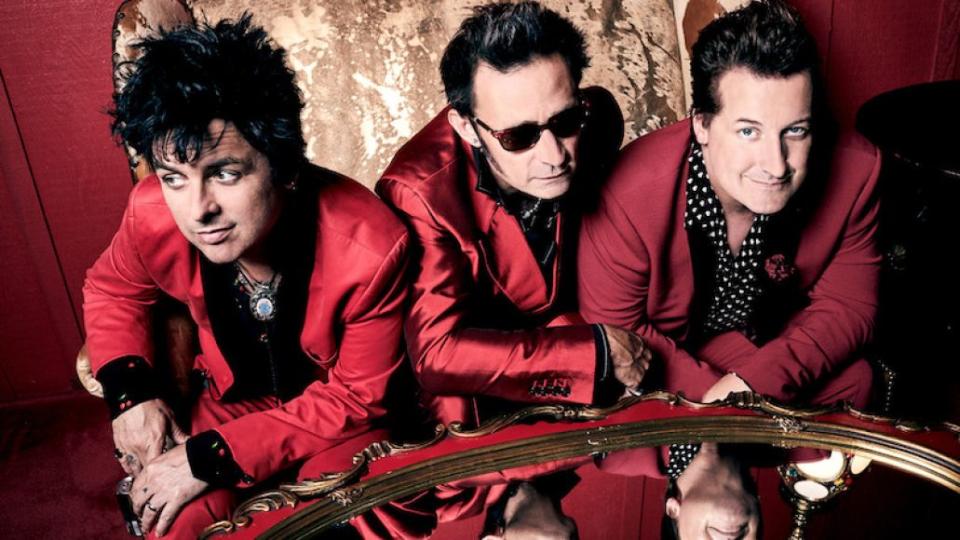
Green Day, photo courtesy of Green Day
Paper Lanterns: It’s been a good decade (seriously, since 21st Century Breakdown) since Green Day put out an album cover that didn’t immediately make us cringe. And, well, a cover that seems to feature the hand from American Idiot but cuts out the most compelling part — the heart-shaped grenade — doesn’t exactly buck that trend. The strategically placed, rainbow-vomiting unicorn that censors the album title doesn’t help matters either, though it’s kinda cute. Tee-hee.
Kill the DJ: As of writing this, Father of All… hasn’t even officially dropped yet. But based on our own review and the others that have already surfaced, critics are either going to quickly disregard this collection or admit that there’s something there — even if it’s not quite what they were looking or hoping for out of this release. We fall in the latter camp. Throwbacks, simplified production, and economy suit us just fine, even if no revolution emerges. Hell, we’re more dancers than fighters anyway.
Having a Blast: Some of these songs already started to matriculate into setlists late last year, namely the title track. The band are always going to play x number of new tracks, and if “Father of All…” acts as a dance-friendly teaser for the new album and a transition between our Green Day favorites, no harm done at all.
Longview: For an album that often seems to value the dance floor over the skate park or even the garage, the video for “Father of All…” — a stream of band shots spliced with background dancers and found footage of all manners of shaking it — has all the right moves.
Song of the Century: Let’s not kid ourselves. This isn’t an album that even die-hard Green Day fans will revisit on the regular. However, if one song off this album should make the unlikely leap from hidden gem to fan favorite, let it be the swinging “Stab You in the Heart.”
In the End: A lucky 13 albums into any career, and a band has to make some decisions. That Green Day chose to shelve the revolution in favor of a fun, at times danceable, music history lesson, tells me that youth — which holds such currency in rebellious circles — has in part given way to wisdom. This isn’t to say that Green Day will never unleash an album that’ll rattle another generation of young ears, but it’s clear that they’ve grown wise enough not to try and force that sort of moment when there isn’t one to be had.
That the band feels confident enough to change up production, hide Armstrong’s signature voice in a falsetto, and pay homage to the sounds that they grew up loving tells me that the band are more revolutionary than they’re often given credit for these days. Sometimes, it’s enough to keep a proud legacy alive — one that Green Day has richly added to over the years and continues to safeguard.
— M.M.
08. 1,039/ Smoothed Out Slappy Hours (1991)
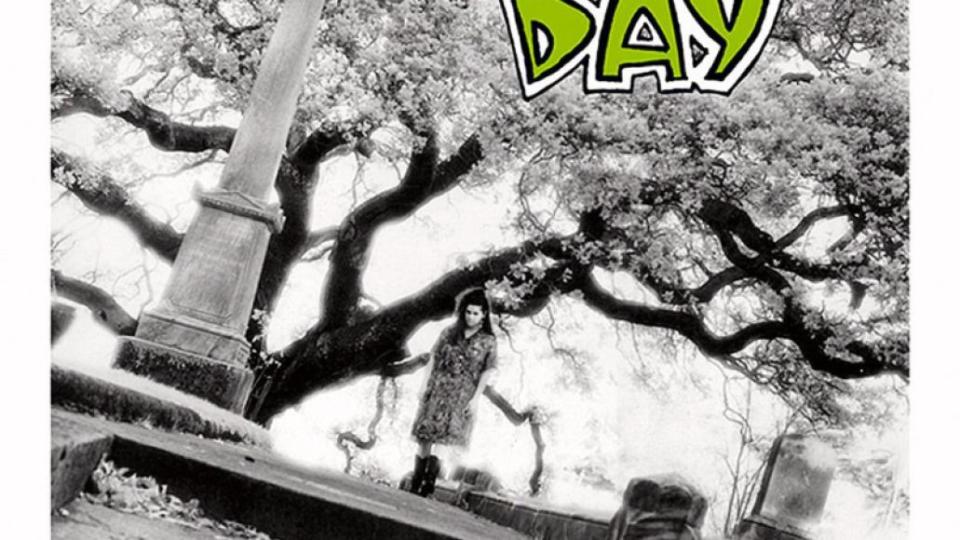
Runtime: 56:15
Brain Stew: This one’s a little tricky. Technically, Green Day’s debut is 1,039/Smooth, a 10-track LP — from “At the Library” to “The Judge’s Daughter” — that was released in 1990 on black-and-green vinyl to modest success for Lookout! Records. A year later, however, the indie label reissued the album, only it was bundled with their earlier EPs, 1989’s 1,000 Hours and 1990’s Smooth, and retitled 1,039/Smoothed Out Slappy Hours. Each work was produced by Green Day and producer Andy Ernst, who would go on to produce a who’s who of fledgling indie punk rockers, from Rancid to Screeching Weasel to AFI.
The entire collection is rough, sounding like it was recorded on a four-track that rattled around on a wooden floor the entire time, but that’s also what makes it so special. Armstrong’s vocals feel so far off that you have to really hone in to hear them properly. In fact, if it weren’t for the sheets of lyrics, you wouldn’t even know what he was singing about.
But that’s the case for any budding punk band, and to add to the punk rock cliches, they even had another drummer during this era: John Kiffmeyer, whose last work with the trio would be the elusive Sweet Children EP. Shortly after, he’d head out to college. Oops.
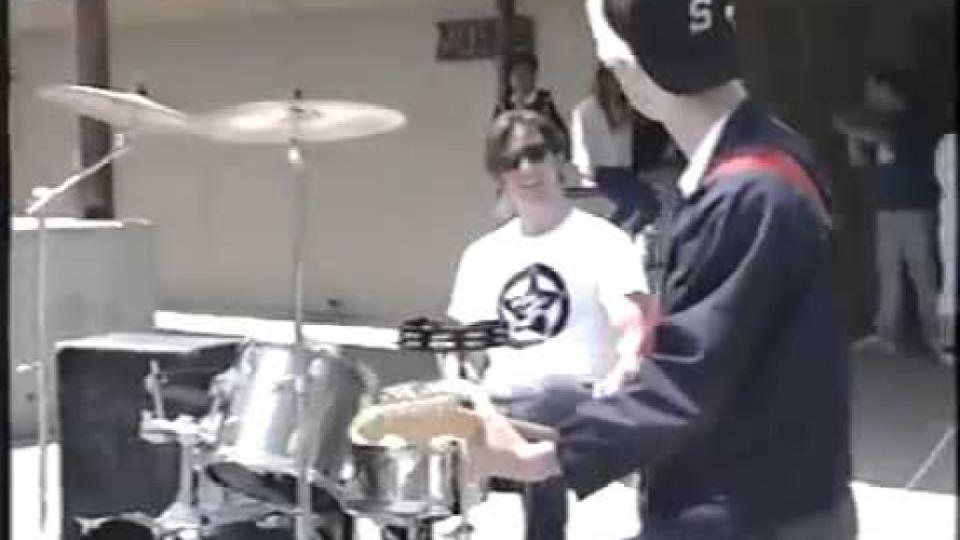
Paper Lanterns: The cover artwork is just as scrappy as the production, slapping together a bunch of articulated scribbling over a stark, black-and-white photo of a vixen looming amid a sunny graveyard. It’s a little eerie, admittedly, but most of that has to do with the glowing tree branches sprawled out in the background.
Chris Appelgren was responsible for the drawings, and it’s his work that would shape other punk outfits like Screeching Weasel, The Queers, The Donnas, and Ted Leo and the Pharmacists. He would go on to run the Lookout! label in 1997 when founder Larry Livermore and partner Patrick Hynes opted to retire from the business. His last work with Green Day would be the controversial cover artwork for 1992’s Kerplunk.
Kill the DJ: Robert Christgau dropped a bomb on this sucker, and the overall reception was only slightly better. Still, Lookout! managed to push 3,000 copies in the album’s first year, a pitiful number by major label standards but hardly small potatoes for an indie. Which is why they were so keen on keeping them around for a follow-up.
Over the years, however, 1,039/Smoothed Out Slappy Hours has since been reassessed by many critics, who have found much to love in the crunchy sounds, mostly due to what followed after. As Pitchfork’s Jess Harvell wrote, “If they had broken up after 1,039, they’d be remembered — if at all — as perhaps the slightly less emo cousin to early Jawbreaker, or maybe the musically less accomplished Crimpshrine.”
Having a Blast: Looking back, there are only three cuts off this album that continue to get regular play on the big stage: “Going to Pasalaqua,” “Paper Lanterns,” and their cover of Operation Ivy’s “Knowledge.” We’ll talk about their spirited cover in a bit and gush about how “Pasalaqua” is their most enduring track shortly after, which leaves “Paper Lanterns.”
While not a particularly heavy cut, Armstrong does get to wax poetic on this one, talking of disparate friends bound by unaccepting love, wondering aloud: “To this day, I’m asking why I still think about you.” Look, it doesn’t matter if you grew up with Dookie or American Idiot, the themes of this song have likely haunted your Live Journal or Tumblr page over the years. Reason being, we’ve all grown too close to friends just as we’ve all similarly grown too far apart. So, why not sing and dance about it?
Operation Ivy: Paul Westerberg and his Replacements weren’t the only band that influenced Armstrong. For decades, he’s cited Operation Ivy for providing him with the fundamentals for building his own brand of pop punk, and he’s bowed to their wisdom too many times to count. It all started when they became labelmates on Lookout!, and Green Day decided to pay homage to Tim Armstrong’s outfit by covering “Knowledge” for their second EP, 1990’s Slappy.
They went further than that, though, including the cover in their setlists for years and years, until it eventually became a pseudo Punk Rock 101 for youngsters who came to any Green Day show. This writer can’t tell you how many times he’s seen Armstrong invite an exasperated kid on stage to play the song, only to let him keep the guitar immediately after. Sure, it sounds like a sponsorship deal with Guitar Center, but it’s cute.
Song of the Century: It only takes one shattered heart to know that the Big L is a tight pair of Bad Idea Jeans. That’s ultimately the conceit of “Going to Pasalacqua,” which finds Armstrong staring into the deep end at the diving board, debating mercilessly about whether or not he should plunge into another relationship.
He has his reasons, above all being that he just can’t live without her. If you can’t relate to that feeling, then you need to get out of the house more, or maybe you’ve just been lucky with relationships. For the not so lucky, this gritty pebble is something to keep in the back pocket forever, or at least until it’s needed. In other words, it’ll never, ever, ever get old.
In the End: Even at this early stage in their career, it was obvious that Green Day were an enviable cut above the punk rock wonder that was coming out of California in the late ’80s. Armstrong was singing with his bleeding, pulpy heart in his hands, unabashedly frank in his admissions of love, depression, and angst, and that was pretty revelatory stuff. As Lookout!’s Larry Livermore once told Rob Harvilla, “I knew within 30 seconds of the first time I saw them that they had the potential to be great.”
It’s not that complicated, though; Green Day have always capitalized on simple things like melody and hooks, recalling the likes of other hitmakers like Jan and Dean or The Everly Brothers. That talent is obvious from the get-go of 1,039, from the opening tracks (“At the Library,” “I Was There”) to the bundled fare down the tracklist (“1,000 Hours,” “The One I Want”). Altogether, it’s a jumbled, slightly aggravated mess, but there’s a naïve innocence at hand that’s undeniably alluring.
— M.R.
07. 21st Century Breakdown (2009)
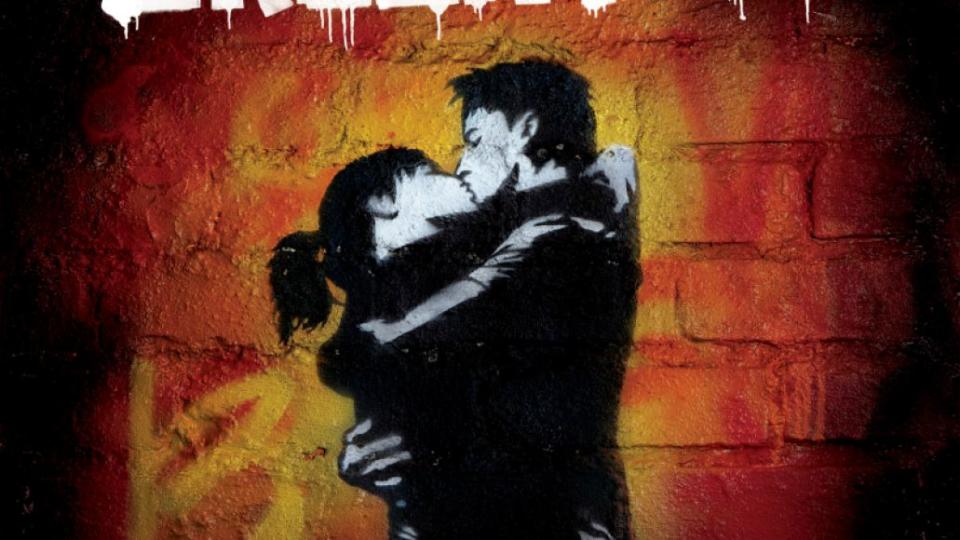
Runtime: 69:16
Brain Stew: After the global phenomenon of 2004’s American Idiot, everyone understood that it would take some time before Green Day followed up with another record. Besides, they were keeping themselves busy, touring the world, releasing live albums, and squeezing literally every drop out of their beloved rock opera. Around 2006, however, Billie Joe Armstrong started demoing tracks for their eighth studio effort, working heavily on the piano and leaning lyrically on then-creeping feelings of being a middle-age punk rocker. Eventually, he and the band conceptualized around 45 songs in their Oakland rehearsal space before setting out across four studios in California with veteran producer Butch Vig.
Once again, Vig struck gold — especially considering the album would win Best Rock Album at the 52nd Grammy Awards — and it’s his production that separated 21st Century Breakdown from its blockbuster predecessor. As is the case with anything the Garbage drummer touches, it’s abrasive yet ultimately sleek. There’s an amplified polish to this rock opera that spotlights the variety of sounds at hand — see: the Middle Eastern vibes in “Peacemaker” or the waltz-y theatrics of “¿Viva la Gloria? (Little Girl)” — without feeling so gaudy.
Perhaps stressed over expectations, Armstrong kept his sprawling lyrics close to the chest, waiting late in the process to finally unveil them to Vig and the band. Whatever dude, it worked.
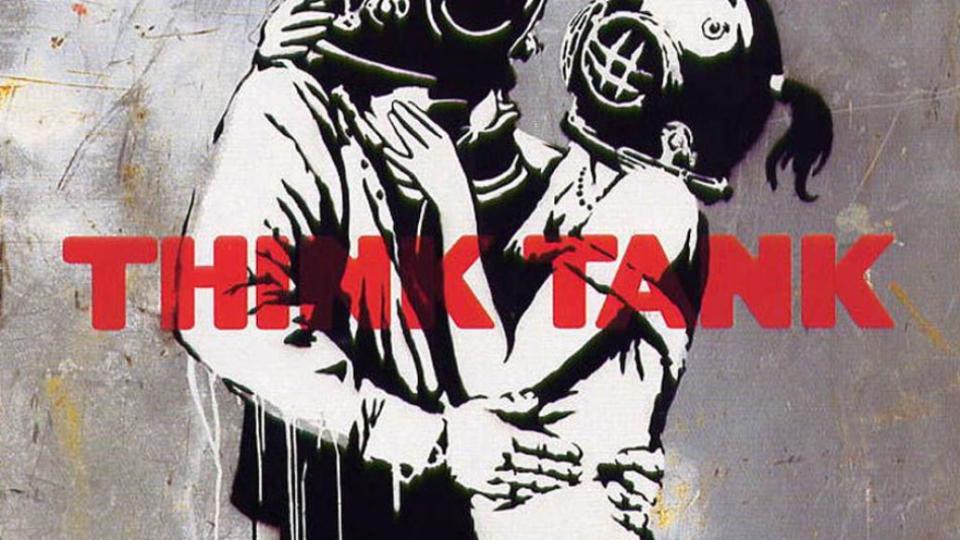
Paper Lanterns: Armstrong wasn’t the only one straddled with high expectations. The album artwork for American Idiot was a large part of what made the album resonate so much with fans across the world. Similar to Pink Floyd’s The Wall, the visual components became intertwined with the music — think about how many times you saw that bleeding heart grenade in the mid-aughts — and when it came time for the follow-up, that task was handed off again to artist Chris Bilheimer.
This time around, Bilheimer drew influence from renowned street artist Sixten, whose graffitied couple became the album’s thematic guise. At the time, some argued it was too similar to Banksy’s artwork for Blur’s Think Thank, and they weren’t exactly wrong. In all fairness, the artwork was a bit too similar to American Idiot and likely why a few cynics wrote off the album as a double-dip.
Kill the DJ: But those who scoffed were mostly in the minority, to borrow a title from the Oakland trio. 21st Century Breakdown arrived to a warm reception, with only a few notable voices such as Robert Christgau, Slant, and Pitchfork rebuking the album. (It should be noted that Pitchfork also gave American Idiot a forgettable 7.2, which was actually reasonable then for that era of the publication, but still: context.)
This writer wrote in his B+ review, “21st Century Breakdown doesn’t have the surprises and left-field advantage that saved American Idiot, but it’s one hell of an album that should satisfy even the worst of the pessimists.” As for its commercial success, the record opened at No. 1 on the Billboard 200, selling 215,000 copies in the first week, and held that spot for another three weeks. It’s since sold millions of copies worldwide — not American Idiot numbers, but numbers nonetheless.
Having a Blast: While not a great single, per se, “Know Your Enemy” was an unstoppable blitzkrieg when the band toured behind the album in the summer of 2009. Opening with the track, the crowd would just lose their shit, mostly due to Cool’s rallying percussion further adrenalized by Armstrong’s campaigning lyrics and punchy distortion. It’s repetitive, sure, but that’s sort of what you want out of an opening anthem, and this one burned every fan the right way.
Almost immediately, mosh pits would form, and fans would start crowd surfing at every opening — dogs, cats, mass hysteria-type of shit. On a more superficial level, the band just looked fucking cool as hell whenever they played it, and they ate up every lick, every word, and every beat.
Longview: In another move to further distance the album from American Idiot, the band said thanks to director Samuel Bayer for all his hard work — he lensed videos for every hit single off the LP, including their 2005 live album, Bullet in a Bible — and brought back one-time collaborator Marc Webb for three of the album’s five videos. Upon its release, the veteran music video director was a gasp away from unveiling his debut feature film, (500) Days of Summer, which would surface that July. So, he was a hot commodity of sorts, but as fans would later discover with his reboots for Spider-Man, he could also disappoint.
Needless to say, Webb’s videos for 21st Century Breakdown weren’t very memorable and pale in comparison to what Bayer previously delivered, but he had his moments. “21 Guns,” with its sparkling bullets ricocheting around a living room, attempts to spark the cinematic magic that made “Wake Me Up When September Ends” such an MTV hit and succeeds for the most part. If anything, it’s a lot more interesting to watch than the montage of footage that Chris Dugan and M. Douglas Silverstein pieced together for “East Jesus Nowhere” or the performance video that Matthew Cullen devised for “Know Your Enemy.”
Song of the Century: Nearly a decade later, it’s this album’s title track that still speaks loudest to the band’s ironclad ambition. Listening to the five-minute song, which sounds like it could be from The Who or Queen, it’s easy to understand why they’d follow 21st Century Breakdown with a trilogy of records, as they’re always going for the next big hurdle.
But that doesn’t mean it’s an excellent song; the oft-ignored track that both underlines their grandiosity and matches the melodic fervor of their greatest hits is “¡Viva la Gloria!”. What starts out as a piano ballad quickly turns into one of their signature rockers, shaking around with blissful harmonies and enough change-ups to keep things fresh. Granted, the name Gloria will forever be tied to Van Morrison, but you gotta hand it to Armstrong for at least trying. This one’s staying, at least for now.
In the End: Despite the album’s loose narrative involving characters like Christian and Gloria, 21st Century Breakdown feels a little more personal than American Idiot. Much of this has to do with the way Armstrong sings so many songs in the first person and with emotions that can best be described as intimate. It’s also a little more varied, cycling through an array of sounds not too dissimilar from 2000’s cruelly underrated album, Warning.
Songs like “Peacemaker,” “Last Night on Earth,” and “Restless Heart Syndrome” are left turns for the outfit, as if they decided to ape the latter half of The Beatles’ career as opposed to the poppier early years. Still, the whole stigma of this being another rehash of American Idiot lingers, and in a perfect world, they might have gone for simplicity before taking another shot at something so conceptual. Today, 21st Century Breakdown feels more like a collection of great songs than a great record, less a statement and more a scrapbook. Not that there’s anything wrong with that.
— M.R.
06. Nimrod (1997)
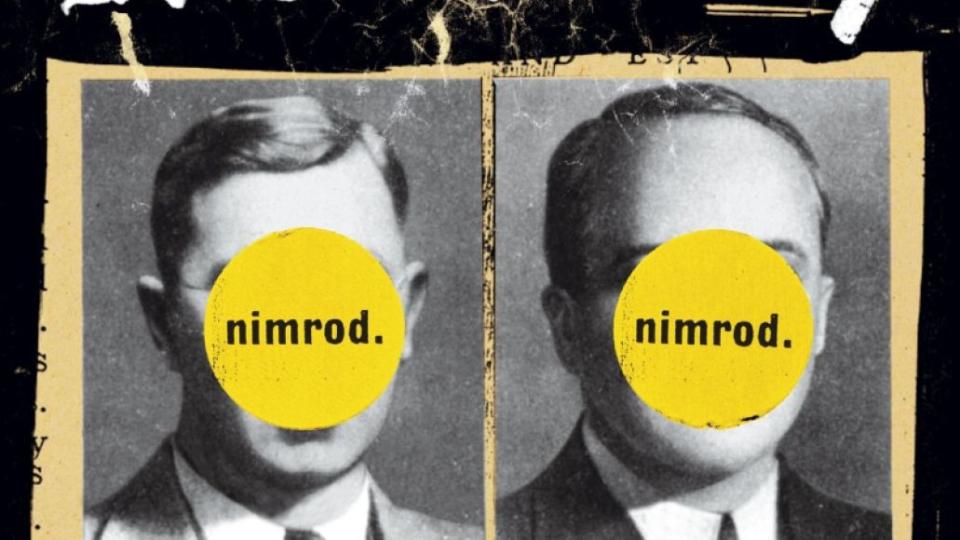
Runtime: 49:09
Brain Stew: Prior to the three-headed slog that is ¡Uno!, ¡Dos!, and ¡Tré!, Green Day’s albums might be viewed as working in pairs. 39/Smooth and Kerplunk are the formative, minor-league albums, Dookie and Insomniac comprise the band’s snotty alt rock heroics, and American Idiot and 21st Century Breakdown are the bombastic rock operas of their rebirth. Nimrod, then, could be looked at as a transitional album where the band begins coming of age — a growth spurt that would be even more easily measured on its follow-up, Warning.
The band was dealing with a lot at the time. They were pushing 30 and now had families to think about, playing packed arenas instead of familiar clubs, and feeling the pressure that comes with shifting millions of records. Instead of putting out the third “Green Day” album in four years, the band opted to cancel their European tour and work on a record that represented who they were and where they saw themselves heading.
“This is a record we’ve been thinking about for the past six years,” Armstrong explained at the time. “We knew we wanted to change, but we didn’t want to change too much too soon.” The result is a hodgepodge of standalone songs that keeps one boot in the past while the other treads new musical and thematic territory. It’s a mess, but a brutally honest and frequently beautiful one.
Paper Lanterns: The band went through three art directors before Armstrong landed on Chris Bilheimer, a friend who had designed album art for R.E.M. Armed with only the album title, Nimrod, Bilheimer had the idea to vandalize old photographs using the title, thereby taking away that person’s identity. In some ways, the idea seems to fit an album in which the band were filling in the musical blanks to discover the true face of Green Day going forward.
Kill the DJ: Critics and fans alike followed Green Day on their first major studio detour, the album being certified double platinum in less than three years. Even if the record’s bloated length and lack of cohesiveness could make it a potentially overwhelming and frustrating listen, the sentiment seemed to be that there was something for everyone in this proverbial kitchen sink of an album.
Having a Blast: It may not have quite conquered the world as a single, but the swinging thump of “Hitchin’ a Ride” was a type of sound we’d never quite heard from Green Day before. From the smooth vocals over the bouncing beat to the shouted count-offs to the final, unexpected explosion, it’s a wild ride from start to finish. It has the potential to get even crazier in concert, with Armstrong often addressing the crowd or leading a faux Southern preacher sermon mid-song, all building the tension for that climactic final push. Just remember: The song may fly off the rails, but you need to hang on to that wagon.
Longview: I’m not sure if the visual monotony of “Redundant” is best described as brilliant or aggravating, but the video for Armstrong’s song about a six-foot-deep relationship rut remains replayed and seared into my memory for all time. Still, it’s a smart idea for representing that feeling of being perpetually stuck in relationship patterns that we feel powerless to break free from. Be sure to stick around for the end of the video when Armstrong breaks the cycle by picking up the robed woman’s newspaper. I’m not sure if he’s helped or hurt the situation, but it feels so good to see something new and spontaneous happen for the first time in several minutes.
Song of the Century: I mean, you think you know a band. Then they hit you with the acoustic, string-accented “Good Riddance (Time of Your Life)” buried at the end of Nimrod. Then you learn that Armstrong wrote the song back in the Lookout! days — Billie Joe, we hardly knew ye. In hindsight, it’s not that surprising that Armstrong tackled this particular tune. After all, so many of his other songs had either shown an anxiousness over aging or a sense of premature nostalgia. For him to write a reflective song on past times, even one that barely registers above a soft conversation, really isn’t out of character.
Maybe strangest of all is that Green Day fans who had been with the band since Dookie now found their uninitiated classmates swaying to the song at school dances or their parents singing along to it. It was the first time I think I ever understood what Green Day’s original Gilman Street fans may have felt like when Reprise scooped the band up and shared them with the masses. At the end of the day, you’re either okay with your mother borrowing your Nimrod CD, or you aren’t. I just… didn’t see it coming.
In the End: The band, critics, and fans alike tend to peg Nimrod as the album in which Green Day matured. After four albums of being snotty adolescents, it was time to grow up. Nobody could really deny that musicians nearing 30 deserved to finally leave mom and dad’s basement and look to the future. That meant anything goes on Nimrod, as the band tried to find themselves.
The result was an eclectic collection that oscillated between updates on the band’s traditional sound and experiments that saw strings, violins, horns, and harmonica filling in where basic, three-chord guitar rock used to be. Armstrong’s lyrical themes also took a turn towards adulthood: focusing more on maintaining serious relationships (“Redundant”), aging gracefully (“The Grouch”), and appreciating but no longer rose-coloring the past (“Good Riddance”). If Nimrod missteps or comes across as a mess at times, it does so honestly. After all, no matter how old we get, figuring out who we are is never a simple or tidy business.
— M.M.
05. Insomniac (1995)
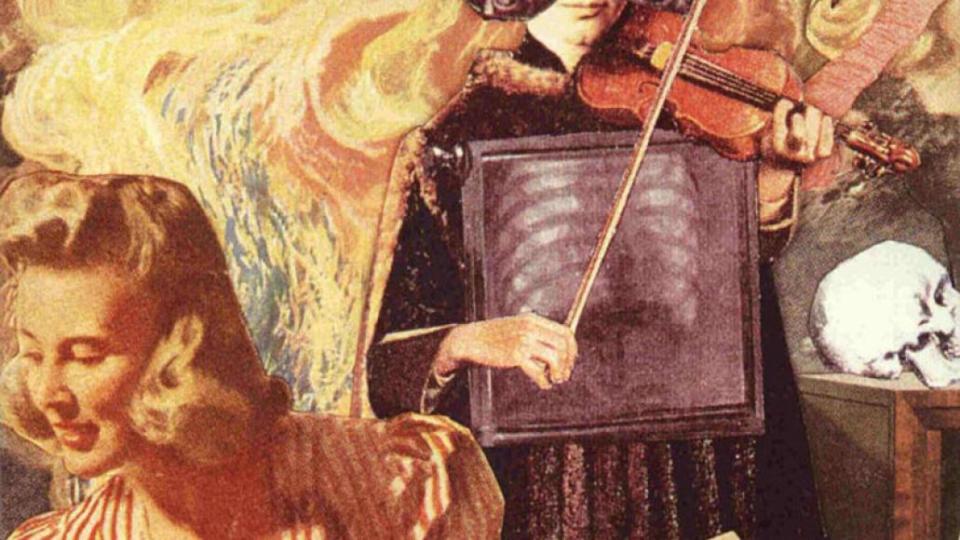
Runtime: 32:49
Brain Stew: How do you follow up an album that transformed your career, affected the lives of millions, and shifted the rock-and-roll landscape by ushering pop punk into the mainstream? Well, if you’re Green Day, you pretty much act as if none of it ever happened. Just a year after recording Dookie, Armstrong, Dirnt, and Cool rejoined producer Rob Cavallo — this time at Hyde Street Studios in San Francisco — for a follow-up that seems utterly unconcerned with topping its predecessor or distancing itself from the snotty style and adolescent topicality that made the band wildly popular in the first place. Consider Insomniac a slightly heavier second helping of a meal that tasted shamefully savory the first time down the gullet.
Paper Lanterns: Like Dookie, the artwork of Insomniac crams in as much visual stimuli as possible. Collage artist Winston Smith, also known for his work with Dead Kennedys, peppered the piece not only with oddball depictions like a chimp on a trike and a woman holding a sleeping man in a hammock at gunpoint, but also with several hidden images, including a naked woman (got your attention), three fairies, and haunting faces in the flames. (Still haven’t found Jimmy Hoffa in there yet, but we’re looking.) Smith also placed three skulls in the artwork, one for each band member. Two are quick to spot, but the third actually requires you to tilt the image at an angle. (Go on. We’ll wait while you try it.) Makes pooches flinging feces seem rather elementary, doesn’t it?
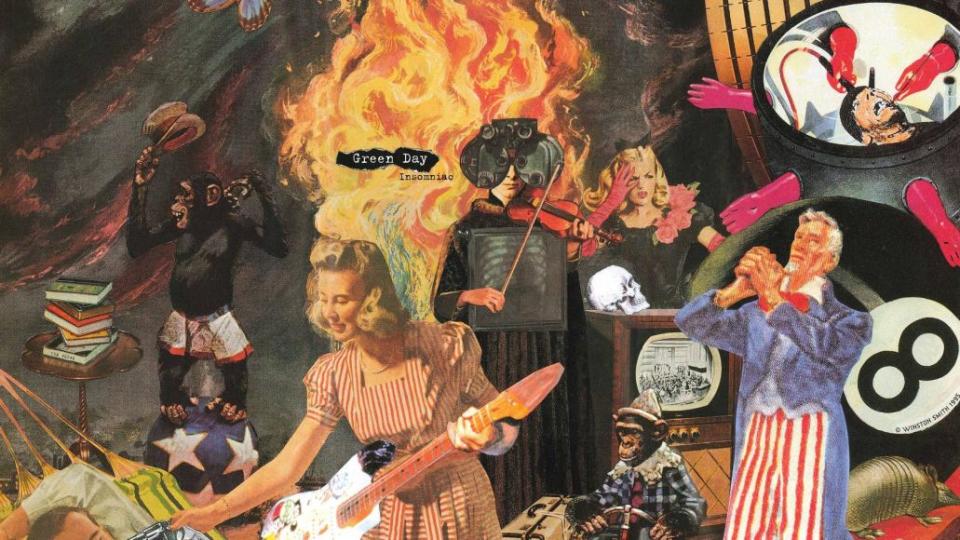
Kill the DJ: Quick on the heels of their major-label debut, Insomniac generally found praise among both critics and fans. With Dookie still dominating airwaves, nobody was opposed to a second hit of what had recently sparked alt rock’s imagination. The few critics of the album cite a lack of growth from the band (shit, it was only a year later), but it’s hard to find cracks any larger than hairlines in Armstrong’s songwriting at this point. Actually, it’s remarkable that the band put out a second batch of songs this stellar in such a brief span. After years of defining and toning their go-to pop punk muscles, Insomniac finds Green Day flexing and strutting. And why the hell not?
Having a Blast: When the band’s original Gilman Street fan base turned on them following the trio leaving Lookout! Records for Reprise, Green Day pushed forward. That doesn’t mean it didn’t hurt, though. “86” revisits that feeling of rejection in a streamlined blitz that shows just how perfectly Armstrong knew his way around simple melodies. It doesn’t get played live often, but when it does, it’s a rocking reminder that sometimes there really is no going back. And, no, the band did not play the song when they returned to Gilman for a secret benefit set in 2015. That would’ve been too perfect.
Longview: The general teenage boredom of “Longview” has been replaced by more specific tedium, this time from insomnia, on “Brain Stew,” officially coupled with “Jaded” as a single. Leave it to a song with the word “Stew” in its title to exemplify the thicker, heartier sound that Insomniac hoisted over its lighter, bouncier predecessor. And while some may recall the band strolling nonchalantly amid calamities (“Walking Contradiction”) or Winston Smith’s cartoon violence that got “Stuck with Me” banned by MTV USA, no image from the album’s music videos lives on like seeing the band hitch a ride on mom and dad’s plaid basement couch through mountains of garbage. Mind in the gutter and a couch down in the dumps. Sounds about right.
Song of the Century: Because none of Insomniac’s singles enamored the public like those off Dookie, the record feels more like a whole rather than something you break down into individual tracks. But if one song endures on its own, it just might be “Geek Stink Breath.” The cut, an example of a darker, more grinding Green Day, marches down a path of self-destruction that Dookie only ever fantasized about. “I’m on a mission/ I made my decision,” Armstrong pledges, “to lead a path of self-destruction.” His mission statement is to flush his life down the drain. That’s pretty damn dark, no?
In the End: It’s more than a bit unfair that Insomniac will likely forever smoke up in Dookie’s shadow. That’s its only real crime. It directly followed one of the generation-defining albums of the ’90s — and I do mean directly. Cavallo and the band were laying down the record only seven months after Dookie’s release. But while no singles off the record captured the imagination of the masses like a “Basket Case” or “When I Come Around,” top to bottom, the album finds Green Day flexing their perfectly developed pop punk muscles in a tighter, more streamlined affair that plays nearly as solid as Dookie but without the fanfare. It’s a hellbent half hour you’ll never nod off during. Now, try and get some bloody sleep.
— M.M.
04. Kerplunk (1992)
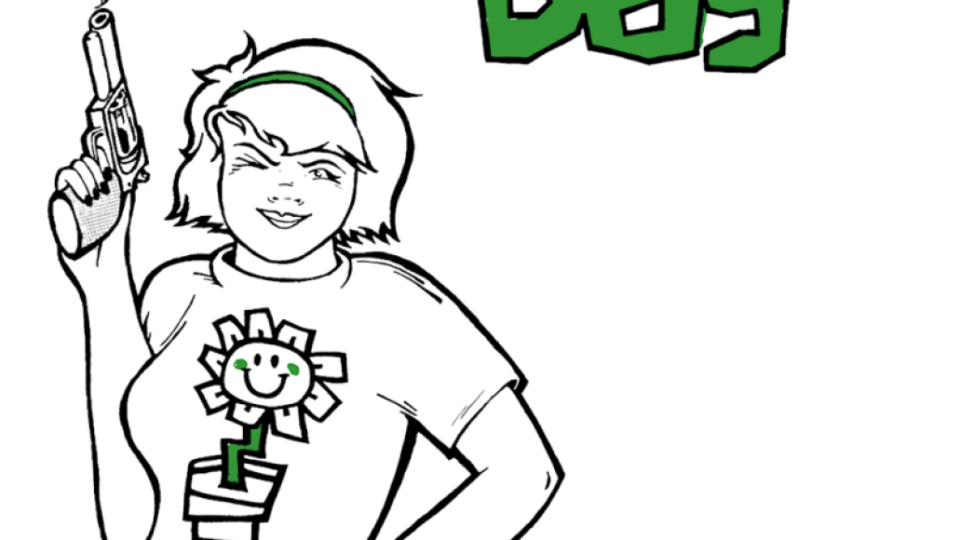
Runtime: 33:58 (42:09 if bundled with the Sweet Children EP)
Brain Stew: Kerplunk cost $1,200 to record, and the band knocked it out with a level of urgency that’s mirrored by the music itself. Still, it’s a clean record, if not a crisp one. Traces of fatigue linger in the corners, and toss-off joke song “Dominated Love Slave” unforgivingly disrupts the good stuff on either end of it, but the band was able to exploit their lo-fi means to capture their live energy, which is basically all any fledgling band can hope for when recording their first album.
Two different versions were eventually released, a 12-track vinyl release comprising the Kerplunk sessions and a 16-track CD/cassette version that includes the four-song Sweet Children EP.
Paper Lanterns: Simple and perfect, the cover of Kerplunk shows a smirking girl brandishing a smoking pistol. It should come as no surprise that the back cover shows her victim, on the ground and bleeding from the back. It was banned by some stores then, and it’d probably be banned by more now.
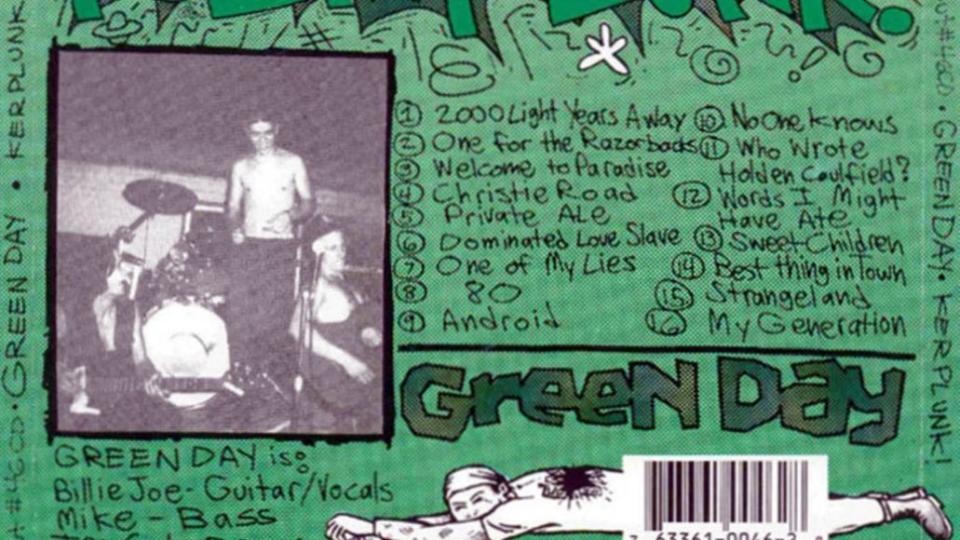
Kill the DJ: Kerplunk was a word-of-mouth success more than a critical darling, with the praise of the punks at Berkeley’s 924 Gilman Street meaning more to Green Day than any zine. Retrospective reviews, however, are primarily positive. Pitchfork and AllMusic are quick to note that Armstrong’s songwriting chops were nearly as strong here as on Dookie, with AllMusic calling it a “perfect dry run.”
Having a Blast: “2,000 Light Years Away,” a song you’ll hear if you check ‘em out on this later tour. It’s an enduring live track for the band, if only because it serves as a treat for a) anyone who ever bothered to explore their pre-Dookie catalog or b) any grandpas in the audience who followed the band way back when. It’s a different kind of energy that ignites during those open chords, one that evokes the band’s punk roots through craft rather than presentation. It’s also just damn catchy.
Words I Might Have Ate (Rights Controversy): Green Day likely felt a connection to its Berkeley roots via Lookout! Records, the scrappy indie label that released Kerplunk and 39/Smooth and was, post-Dookie, reaping the monetary benefits of being an early supporter. In 2005, however, Green Day rescinded the master rights to those records, essentially hobbling the label and bringing about its demise.
Before decrying those corporate shills, however, consider that Lookout! wasn’t paying its due royalties, not to Green Day or to any number of its other bands, including Operation Ivy and Screeching Weasel. Not very punk, eh? Well, neither is screwing the bands you claim to love. Nobody seems to have any enduring vitriol for Lookout!, but a deal’s a deal.
Song of the Century: An early version of “Welcome to Paradise” can be found on Kerplunk, and that, along with “2,000 Light Years Away,” are likely the only songs you’re going to hear from the album in this day and age. That said, few fans would name either as the album’s best song, which is, without a doubt, “Who Wrote Holden Caulfield?” A lament to the forgetful stoner, the song pulses with an urgency that transcends its roots. The chorus is pure fire, as clear a precursor to “Longview” as you could ask for.
In the End: Kerplunk is the sound of a band that just needed someone with money to believe in them. The band’s chemistry was evident, Armstrong’s lyrics were taking on dimension, and the songwriting already showed a harmonious fusion of punk and pop. Is it absolute top-shelf Green Day? Not particularly. There’s nothing timeless or barrier-shattering on Kerplunk, but there is the sound of a band that’s got the potential to take over the world. Some bands need money to sound great; Green Day just needed money to be heard.
— R.C.
03. Warning (2000)
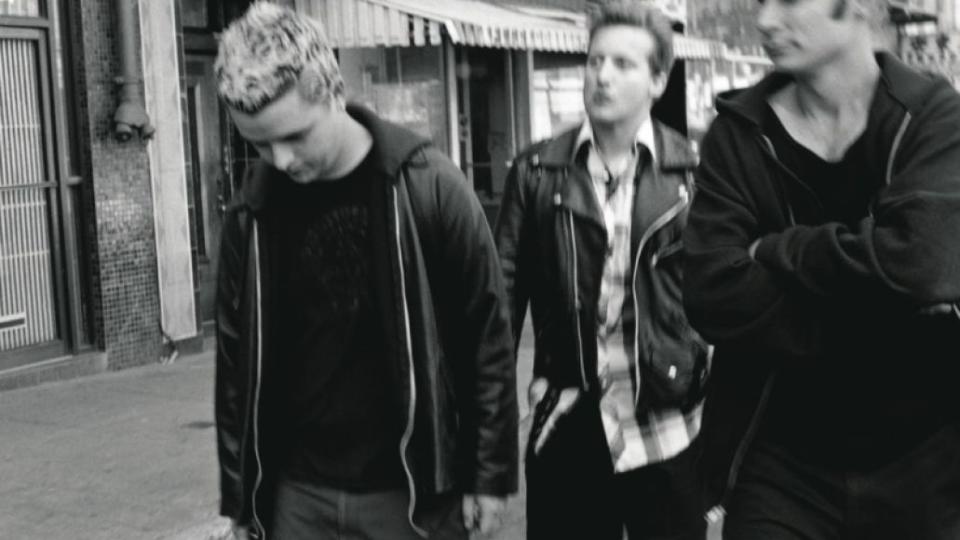
Runtime: 41:14
Brain Stew: It’s safe to say that Billie Joe and the boys wouldn’t have felt comfortable making Warning if it weren’t for the success of Nimrod’s “Time of Your Life.” It looked like people wanted a mellower, more introspective version of Green Day, after all. That was fine with Armstrong, who spent much of his time leading up to recording listening to Bob Dylan and writing from a place of social consciousness.
To help them hone this approach, they took a step back from longtime producer Rob Cavallo, opting instead to work with alt-rock producer Scott Litt, who worked on R.E.M.’s Automatic for the People and Monster. Litt wasn’t a good fit, alas, so the band brought Cavallo back as a consultant and did most of the mixing themselves. This was probably the best choice for a band that most people thought they had pegged; Green Day weren’t trying to reinvent themselves with Warning, but it’s clear that the last thing they wanted to make was another punk record.
The result feels much more subdued than their previous efforts, cleaner and more focused. It also gave them greater freedom in terms of style, with the band using “Misery” to further explore their interest in klezmer instrumentation and “Hold On” as a way to flaunt their propensity for folk pop (and ripping off The Beatles).
Paper Lanterns: Warning doesn’t just sound different — it looks different. Gone are the scatty illustrations and sloppy collages of previous records; Warning’s cover is simply a picture: the band, looking contemplative as they stroll past the Blossom Bakery in San Francisco’s Chinatown. Whether the choice was conscious or not, it screams that this is their “mature” album.
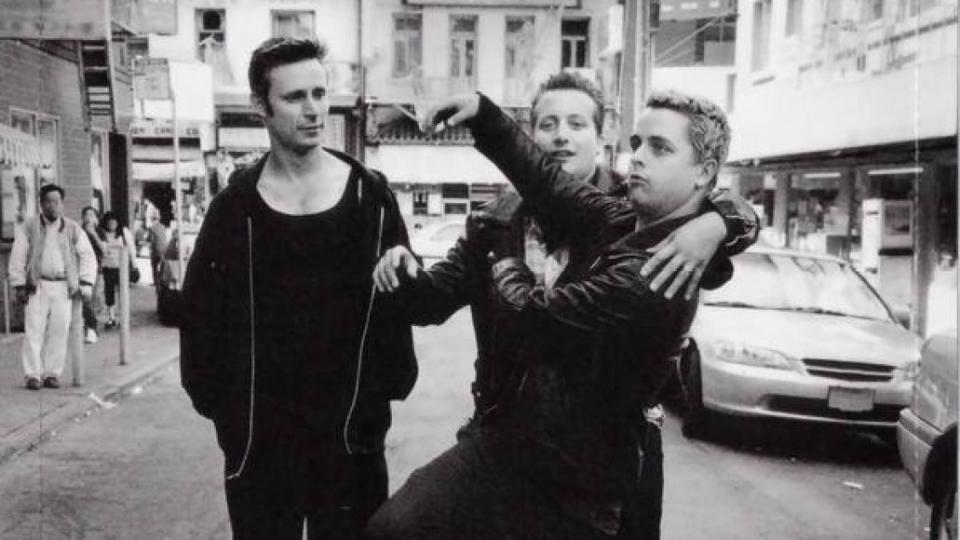
Kill the DJ: By Green Day standards, not great. Robert Christgau praised the band’s “artistic growth,” and The Village Voice called it the band’s best work. Others, like NME and Rolling Stone, had no desire to hear lighter songs about social consciousness from “snot-core’s biggest-selling band.” NOFX’s Fat Mike said it was their worst album, should that be something you care to know.
There’s been renewed appreciation in recent years, however, with Warning standing out among Green Day’s collective catalog as a distinctive and successful shift in the band’s transition from punk rockers to stadium stalwarts. MTV and AllMusic have written retrospective raves, and even Rolling Stone offered a more positive take.
Having a Blast: “Minority,” if only because it’s literally one of the most joyful songs ever recorded. Fast, vibrant, and brimming with vital rebellion (“down with the moral majority!”), the song is the kind that can get an entire stadium singing along. They’re still playing it, too. In recent live shows, the band’s used “Minority” as a rallying cry in their criticism of presidential nominee Donald Trump.
Longview: The video for “Waiting” marks the band’s first collaboration with filmmaker Marc Webb, who would go on to work with the band again with the release of 21st Century Breakdown. The premise is simple — a horde of rowdy teens trash an old house as the band plays in the background — but his talent is evident in the way he times their movement to the song’s ebbs and flows, not to mention his ability to fill every inch of the frame with gripping action.
Song of the Century: “Minority,” no doubt. It’s the catchiest and most timeless of any song on Warning, the kind of track that, to this day, continues to give pre-teens a way to articulate and convey their rage at an unfair world.
In the End: Warning is one of Green Day’s smartest and most cohesive records. Restraint has never been one of the band’s strengths, but here they’ve crafted an album that’s as trim as it is progressive, a clear statement that there’s more up this band’s sleeves than tattoos and burn scars. It’s the best kind of transitional record, what with its ability to balance vintage Green Day sneers with effective experiments in aim and style. Everything’s tinkered with here, from the pop emphasis to the folk influence to the pointed lyrics. That none of it is alienating is a testament to Green Day’s versatility and perseverance.
— R.C.
02. American Idiot (2004)
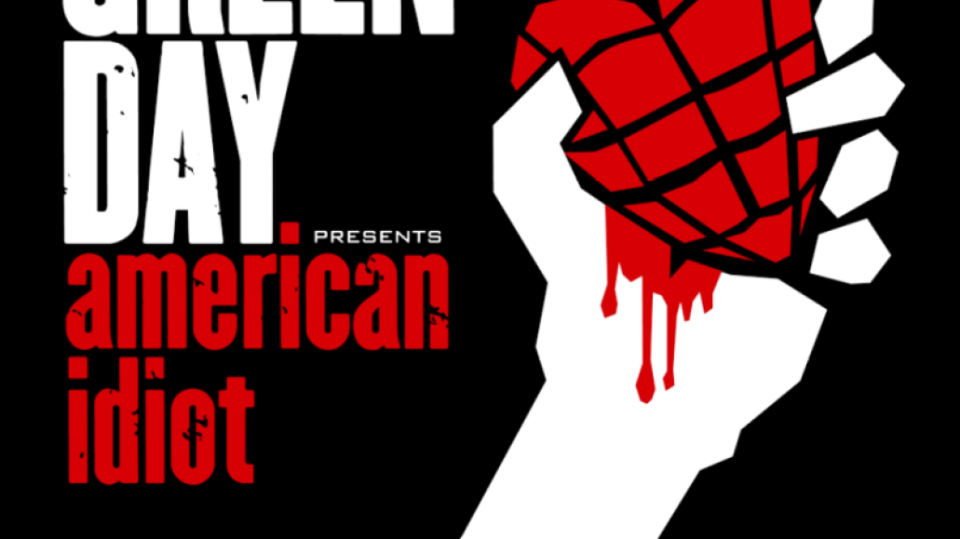
Runtime: 57:12
St. Jimmy’s Watchin’: Things happen for a reason. In hindsight, one might argue it was fate that someone stole Green Day’s master recordings for Cigarettes and Valentines, their initial follow-up to 2000’s Warning. The record was said to be a callback to the band’s earlier days, eschewing the folksy and acoustic melodies that had flavored their last two efforts. As Dirnt hinted at the time: “We’ve had a nice break from making hard and fast music, and it’s made us want to do it again.”
Judging from the songs that have surfaced over the years — the title track popped up on 2011’s live album Awesome as Fuck; “Olivia” was performed during the same performance, though not included in the album; and “Too Much Too Soon” became a B-side for “American Idiot” — Armstrong was absolutely right to call the theft a “blessing in disguise.” It’s unfair to call the songs forgettable, but they pale in comparison to the grand songwriting that would follow on American Idiot.
Brain Stew: In the early aughts, tensions were at an all-time high for the trio. Each member had doubts about whether or not they even wanted to keep things afloat, especially after the release of their 2001 greatest hits compilation, International Superhits!, which felt like the beginning of the end. With Cigarettes and Valentines, they had tried to find something new, something that would shift their spirits, so you could imagine their immediate disappointment when the tapes were stolen.
That all changed when they turned to producer Rob Cavallo, who simply asked them if what they had lost captured the band at their best. Not one member believed as much, and so they willingly returned to the studio, and the three respectively ripped out patches of abrupt ingenuity. As Armstrong explains, “It started getting more serious as we tried to outdo one another. We kept connecting these little half-minute bits until we had something.” You know, a punk rock opera.
Drawing influence from The Beatles and The Who, Armstrong, Dirnt, and Cool set up shop in their Oakland rehearsal space, even wiring together a pirate radio station from which they’d stream jam sessions and various prank calls. Cavallo was present during these moments, guiding them as they carved out anthem after anthem. For further advice, Armstrong rented out an East Village loft in New York City and hung out with singer-songwriters Ryan Adams and Jesse Malin.
On paper, this all sounds like the stuff of rock legend — the things you do to find “greatness” — but it was more of a much-needed face lift. Thanks to Cavallo’s patient and practical direction, the band resurfaced not only sounding new, but looking new. It was Green Day 2.0, a fresh era for an iconic band that could have easily been left to die at future Warped Tours. Instead, they were on the cusp of an unprecedented high, running on the knowledge that they were finally at their best.

Paper Lanterns: Like any corporate rebranding, Green Day had to repurpose every facet of their lives, from their outfits to their hairstyles, from their videos to their artwork. To plant that seed, the band tapped frequent collaborator Chris Bilheimer, who had designed the covers for Nimrod and International Superhits!, and rather wisely, he drew inspiration from the album’s lyrics, specifically the line in “She’s a Rebel” when Armstrong sings, “And she’s holding on my heart like a hand grenade.”
Immediately, everything turned black, white, and red with each drawing assuredly political — remember, this was the time of Bush and Iraq: The Sequel — and so much of that imagery influenced not only the album’s mythology but its generational reach. Fans didn’t just listen to the album; they lived it, and you could see that at every Green Day show during this period, where every youngster would show up dressed to the nines in, you guessed it, red, white, and black. It was fucking surreal.
Kill the DJ: Well, let’s see … American Idiot was the band’s first No. 1 album, selling 267,000 copies in its first week alone, to which it spent a jaw-shattering 101 weeks on the chart, lingering in the top 10 for nearly a year. In 2005, the album won Best Rock Album and Record of the Year (“Boulevard of Broken Dreams”) at the 47th Grammy Awards, took home seven out of its whopping eight nominations at the MTV Video Music Awards, and has since sold around 15 million copies around the world.
Needless to say, it’s a diamond record, but one that’s further elevated by its outstanding critical praise. Rock critics loved it then, and they’ve put it on an even higher pedestal over a decade later, as it comfortably sits at No. 225 in Rolling Stone’s 500 Greatest Albums of All Time and No. 13 in Kerrang’s 100 Greatest Rock Albums of All Time.
Having a Blast: Nothing on American Idiot comes close to the staggering theatricality of “Jesus of Suburbia,” at least onstage. The band’s nine-minute epic highlights the strengths of every member of the trio — hey, even oft-ignored fourth member Jason White — and the dozen change-ups still feel fresh and exciting over a decade removed. Come to think of it, the multi-suite punk rock anthem works no different than a McDonald’s Happy Meal, and if you were an impatient fat kid like this writer growing up, you’d know how each component of Ronny McDonny’s lascivious meals was a separate delight to be enjoyed.
The same goes for “Suburbia,” which Armstrong similarly unpacks with every verse, bridge, and instrumental break. The shiny, greasy toy at the end arrives when he lets everyone finish the marathon song with him, crooning: “Tales from another broken…” Well, you know the rest, and that’s why it should always be a mandatory inclusion on any of their setlists.
Longview: Laugh all you want, but it was pretty sweet when Jamie Bell and Evan Rachel Wood appeared in the video for “Wake Me Up When September Ends,” even if the end result was a fairly overwrought, dramatic affair. Still, you have to applaud director Samuel Bayer, who continually one-upped himself all year when he kept returning with the next in-demand music video for the next in-demand song that conquered the radio waves.
Looking back, though, it might be the utter simplicity of “American Idiot” that stands above the rest. Bayer, who will forever be remembered for helping Nirvana define a generation with his video for “Smells Like Teen Spirit,” comes close to capturing the same energy with “American Idiot,” turning a green American flag into a watery mess. Again, it’s the minimal effort here that feels so refreshing. Performance videos are rarely ever so memorable, and one can’t help but think he added to the look and feel of an album that was so much about look and feel.
Song of the Century: People like to forget about how unstoppable certain songs actually were when they initially surfaced. For a good three years, you couldn’t escape the singles off this album, especially “Boulevard of Broken Dreams,” “Holiday,” and “Wake Me Up When September Ends.” Which is probably why they won’t last forever, sadly, at least not without some form of eye rolling and “Oh god, remember when that song was huge?” It’s stupid, it’s unfair, but hey, it’s the sad fate of any huge hit.
It’ll come in waves, though, and who knows, maybe “September” will have a second life like Journey’s “Don’t Stop Believing,” which has once more come and gone from pop culture. So, looking at the tracks, if we’re to choose one that stands the test of time, it might have to be something that was popular but not too popular, and that’s easily “Letterbomb.” While never a single, it’s always been the underdog, the unsung anthem that diehards loved. Now? It’s a consistent staple of their setlists. But really, who the hell are we kidding, we’ll never stop hearing “Boulevard of Broken Dreams,” “Holiday,” and “Wake Me Up When September Ends.”
In the End: In time, American Idiot will likely go down as Green Day’s greatest achievement. It’s both a commercial juggernaut that never stops giving — it’s gone from a Broadway production to a forthcoming HBO film — and a critical darling that won’t stop charming. And if the genre continues to sink to new lows like it’s been doing over the last decade, it might also be the last rock album to spark a global phenomenon, turning casual listeners into diehards and fellow musicians into understudies (see: My Chemical Romance).
Again, it’s all about the comeback, and Green Day did the unthinkable. This album was like Jordan’s 1995 return to the Bulls, a jolt to a system that didn’t exactly break, but probably was never going to jump any hurdle ever again. It’s telling that American Idiot can arguably make you forget that 1994’s Dookie ever existed. Everything was different, but at the same time, everything wasn’t so different — it was an upgrade, more or less. But it cannot be said enough how rare upgrades of this magnitude are in rock ‘n’ roll. It just doesn’t happen … and you know what? It probably never will again.
— M.R.
01. Dookie (1994)
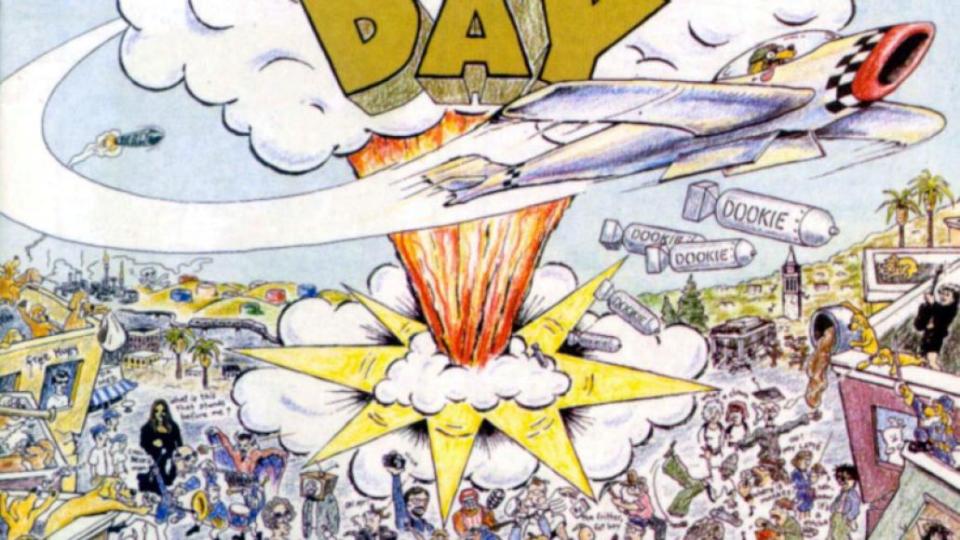
Runtime: 39:38
Brain Stew: After Kerplunk struck indie gold, Green Day found themselves at a crossroads. They could either double-down on their DIY punk ethos (effectively constructing a self-imposed commercial ceiling) by remaining with Lookout! Records or allow themselves to be courted away by major labels. The choice wasn’t entirely obvious. After all, the band had already rejected overtures from I.R.S. Records in the past and had felt so strongly about that decision that letters turning the deal down can actually be found on the inside sleeve of 39/Smooth. But, ultimately, the lure of major-label backing proved too tempting, and a fast-forming friendship with Reprise Records rep and producer Rob Cavallo sealed the deal that ended Green Day’s indie days.
That leap to Reprise is probably why you’re reading this today. That’s not to say that Green Day wouldn’t have made some dents on the indie circuit, but no way would Dookie have permeated popular culture as it has had some version of it been put out on a small label with relatively meager distribution.
Credit Lookout! and the indie ranks as the band’s formative training grounds, where they shaped their sound and style, learned to craft undeniable hooks and melodies, put out a fairly classic record in its own right (Kerplunk), and developed the material that would materialize on Dookie over just three short weeks of recording with Cavallo at the helm. Rerecording “Welcome to Paradise” for their major-label debut can even be viewed as the band trying to remain connected to their punk roots. Unfortunately, not all Green Day fans felt that way about the band hitchin’ a ride to prime time. More on that below.
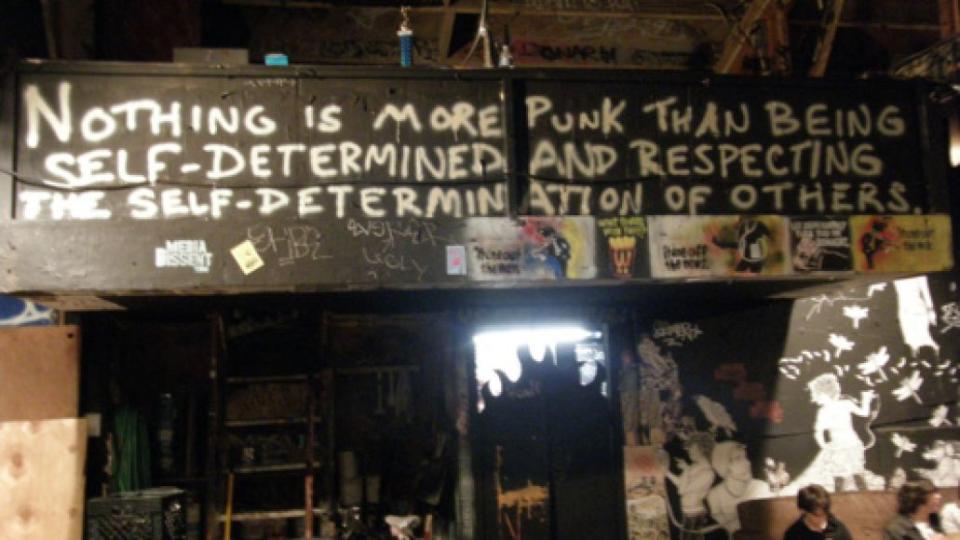
Kill the DJ: Depends on who you ask. If you talk to critics, refer to the Billboard charts, or time-travel back to speak to anyone at my sixth-grade lunch table, you’ll only hear raves about Dookie – and maybe a suppressed giggle or three about the album’s title. However, ask the band’s original 924 Gilman Street fan base about Dookie, and you might get a handful of it flung in your face.
While the rest of the world embraced Green Day’s injection of pop punk into the mainstream, many original fans viewed their leaving Lookout! Records for greener pastures at Reprise as high treason. Two decades on, it looks like those early fans may have finally come around. 924 Gilman Street lifted the ban (yes, there was an actual Green Day ban) and opened their doors to the band in 2015 for a secret benefit concert. Next stop, the Gilman Green Day Gift Shop? Eh, maybe in a couple more years.
Paper Lanterns: Dookie’s artwork ranks among the most iconic of the ‘90s, maybe only topped by that naked baby paddling after a quick buck in a pool. Ironically, apart from the band’s name prominently sketched in ganja green, I don’t think most people could relate many of the art’s details. It has to be one of the busiest album covers ever, complete with dogs dropping bombs (which put the band in the doghouse) and hurling feces, making it memorable but also difficult to focus on the finer details.
Again, Green Day can be seen paying tribute to their Berkeley/Gilman Street roots, Armstrong pointing out that local artist and musician Richie Bucher actually drew in details like a regular Gilman photographer, a local cop, and allusions to other Bay Area acts and the band’s influences. The notebook-sketching style of the artwork also feels fitting, considering how many times I saw a classmate doodling the band’s name or lyrics during algebra class.
Having a Blast: Compared to Dookie’s major singles, “Burnout” hardly ever gets played live. But when it does, there’s never an ounce of disappointment. That opening salvo that finds Armstrong proclaiming, “I declare I don’t care no more” has bombarded our ear drums thousands of times, and yet the sentiment never rings tired or comes across as insincere. It’s a lyric encoded in our disgruntled generation’s DNA every bit as much as “Here we are now, entertain us,” “I’m a loser, baby, so why don’t you kill me?” or “Despite all my rage, I am still just a rat in a cage.”
No matter how much we’ve matured and how well-adjusted our anger management coaches assure us we’ve become, there are still those days where we feel like we’ve burned out far more than we’ve grown up.
Longview: It may be ’90s alt rock’s most recognizable query: “Do you have the time to listen to me whine?” Shrinking his own head in a cloud of pot smoke, “Basket Case” gave rise to Armstrong’s growing concerns about his own mental health before he was ultimately diagnosed with a panic disorder. The genuine confusion and anxiety palpable in this schizo rocker is amplified by the video actually being shot in an abandoned mental institution.
Between the song’s manic structure, Armstrong’s skittish behavior, and the bright, clashing color palette added in post, viewers do get the sense that the band — and possibly even themselves — are about to fly over the cuckoo’s nest at any second. Then again, maybe we were just stoned.
Song of the Century: With 20 million copies floating around out there and teens as bored, lonely, and alienated as ever, Dookie won’t be losing its relevance anytime soon. It’s one of only a handful of ’90s albums that will endure in its entirety and continue to resonate as new teens discover its disgruntled contents. What will they latch on to first, though? It’s not difficult to believe that they’ll make time to listen to Billie Joe whine on the schizophrenic “Basket Case.” Call it stupidly simple, music theory nerds, but that “When I Come Around” riff will be played sloppily in garages and blared out the windows of teens’ hand-me-down cars long after we’ve all kicked it.
But maybe, just maybe, they’ll take some solace, like we did, in Armstrong’s ultimate ode to boredom and loneliness: “Longview.” So much of adolescence comes down to waiting around – for the phone, for the car, for the girl, for an escape from being the awkward, insecure creatures we are and seem destined to always be. Until they invent a quicker cure for adolescence than growing up, teens will likely keep pulling up plaid couches and inhaling, um, Mike Dirnt’s Funyuns-triggering bass line. There are far worse ways to waste our time. Lord knows we’ve tried them.
In the End: As much as we loved Dookie from the get-go, I’m not sure any of us could foresee a scenario in which we’d still be talking about the album more than two decades later. Fido flinging feces or not, there’s just no way to predict how something — especially an album of juvenilia — will age along with us. But here we are, championing — and, more interestingly, still relating to — an album most of us found as pre-teens. Part of that enduring appeal speaks to how adulthood often feels no more reasonable than adolescence.
Indeed, if the rejection, pining, and premature nostalgia of 39/Smooth and Kerplunk wagged a suspicious finger at the future, Dookie all but confirmed that growing up utterly sucks. But rarely has boredom, loneliness, and alienation been packaged so perfectly, each hook, drum fill, bassline, and snotty delivery a masterclass in sincere and irresistible songcraft. Whether you were alienated and angry (“Having a Blast”), confused and coming to terms (“Coming Clean”), or just bored and lonely (“Sassafras Roots”), Dookie offered a fellow sufferer to relate to. And that’s really the only message worth hearing at that age: You’re alone, but you’re not alone.
— M.M.
Ed. note: Read more about Dookie on our 100 Greatest Albums of All Time list here.
A Definitive Ranking of Every Green Day Album
Consequence Staff
Popular Posts


